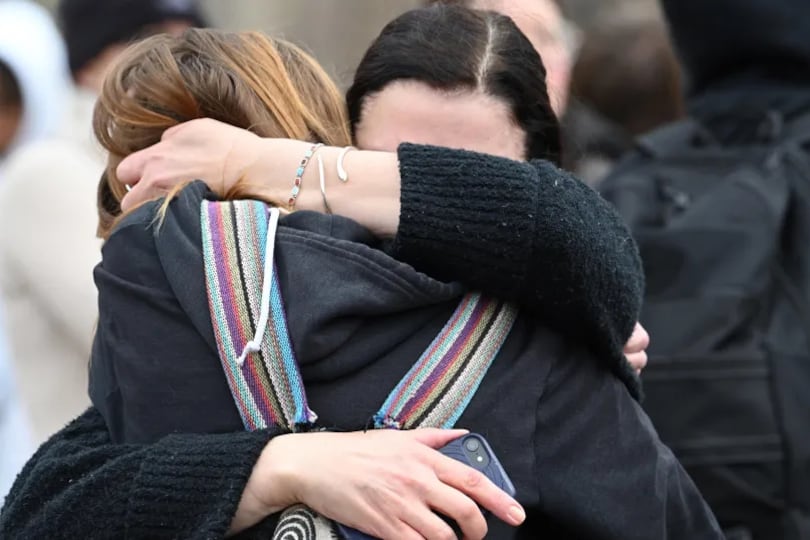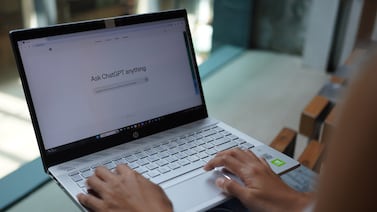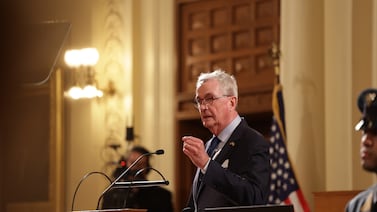Community violence, racial injustice, school shootings. Students across America are faced with these realities every day, leaving educators to respond by adapting lesson plans or offer emergency support.
Some schools have added social workers, counselors, and other mental health resources to grapple with the toll community trauma is taking on students’ mental health. And in some districts, teachers and school leaders have created new student-focused programs in the wake of increases in gun violence and other traumatic incidents.
But educators say they remain overwhelmed and need more resources to support their students, especially following disrupted learning at the height of the COVID pandemic. Students have shared their own hopes for how adults might approach these conversations. If you are an educator or parent looking for resources on how to talk to students, we hope you find the below articles as a good starting place.
Expert advice for talking to children after a traumatic event
How to speak with kids after a violent event
Chalkbeat spoke with social worker Katie Peinovich about how to talk to children about traumatic events, what signs of distress to look for in children, and how to help those who might be fearful of future violence.
Peinovich tells parents, caregivers, and teachers:
- Pay attention to kids’ actions following traumatic events: Kids may startle more easily, seem more irritable, and be reluctant to be apart from parents or caregivers.
- Reassure children that they are now safe: Acknowledge and validate their feelings that what happened was very, very scary. Ongoing news coverage can give preschoolers and early elementary kids the impression that this is an ongoing situation. Parents and schools should limit media coverage and to reassure children that the event is over and they are safe.
- Maintain routines: Both caregivers and educators should strive to keep schedules similar, whether it’s what children eat for breakfast or when they go to recess. Changing up schedules suddenly can heighten anxiety.
- Understand recovery timelines: In about four weeks, most kids will return to their previous level of functioning. If kids are still struggling after a month, they may need extra support.
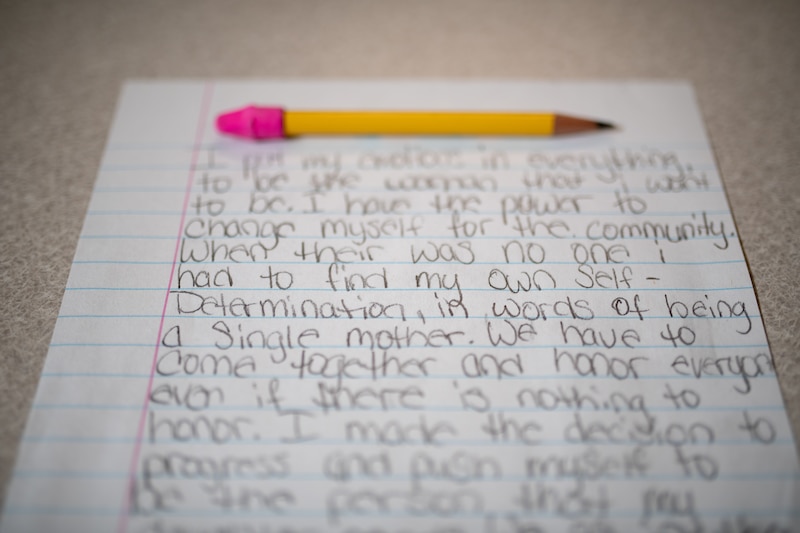
Trauma can make it hard for kids to learn. Here’s how teachers can help.
A child psychologist at Lurie Children’s Hospital and an assistant professor at Northwestern University’s medical school, Colleen Cicchetti helps lead the hospital’s efforts to improve how local schools handle trauma. Chalkbeat interviewed Cicchetti about the cost of childhood trauma in communities and what teachers can do to promote healing.
Her tips for teachers include:
- Establish a predictable and “safe” classroom: This helps students understand the expectations and what they need to do to be successful. Taking breaks helps them focus.
- Ask for help, even if you have to look outside your school: A teacher may not feel like they can tell someone they’re struggling with a student or feel isolated. That can lead to burnout.
This principal had a student killed just days before the year began. Here’s how he and his school found a way forward.
After one of his 6-year-old students was killed two weeks before the school year began, a California principal wrote that the experience taught him a lot about what it means to authentically communicate with young children about death.
“I desperately hope that no one else will ever need to use the lessons I learned,” wrote Danny Etcheverry, principal of Rocketship Spark Academy. “But I know they will, so here are a few ideas that helped guide us — and that might ease the burden a little bit for educators who find themselves with such a task.”
Among his advice:
- Communicate honestly: “My staff members, alongside our school’s mental health professionals, determined that our students would need explanations of the event from those they trust and the space to process those explanations.”
- Provide different kinds of support: “I spent a lot of time in classrooms those first few days, and I was struck by how these moments are initially much more emotional for adults to process than they are for young children … With our youngest students, we spent a lot of time talking about the concept of death and tragedy.”
- Treat compounded trauma: “Over the weeks following the shooting, it became clear that this tragedy layered on top of prior wounds for some students … Healing is a long journey, and we’re just getting started.”
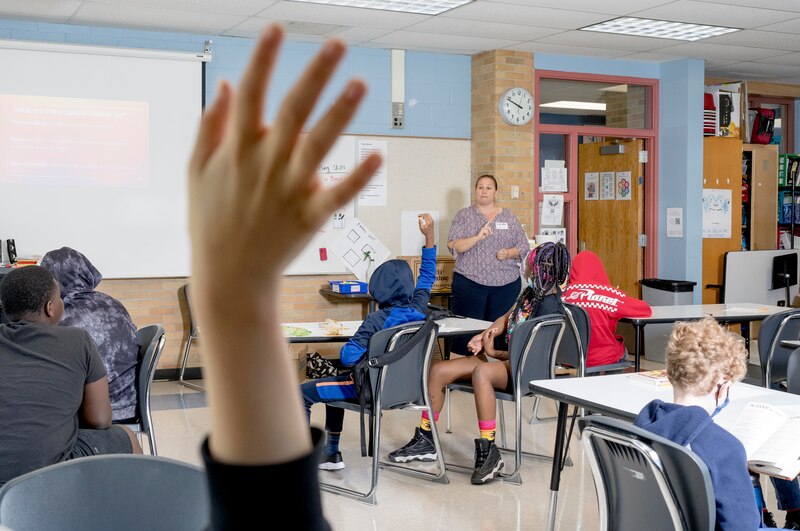
How anti-bigotry lessons help students comprehend violence, push for change
The nonprofit group Facing History & Ourselves provides educators with resources to help students understand the lessons of history to combat bigotry and hate. Following the death of Tyre Nichols — the 29-year-old skateboarder and photographer who died days after being brutalized by Memphis police officers during a traffic stop — a local leader spoke with Chalkbeat about helping Memphis students grapple with Nichols’ death.
Among her advice for educators:
- Don’t always feel the need to talk to students after witnessing or watching a violent event: “We listen to them. We really let them sit with that, because the last thing we want to do is minimize their pain. Our teachers are really skilled at listening, and letting the students talk. We don’t want to say that it’ll be all right, because it may not be all right.”
- Focus on lessons that humanize the students, so they can reflect and have conversations: “In August, when we had the situation with the shooter [19-year-old Ezekiel Kelly was charged with killing three people in a citywide shooting spree], I went to Central High School and listened to Mary McIntosh’s Facing History & Ourselves class, and sat there and listened to her unpack the fear those kids had around that shooting that happened in August. She slowed it down, and got them to free-write it in a journal, just dump it all out, and gave them agency to be able to talk to each other.”
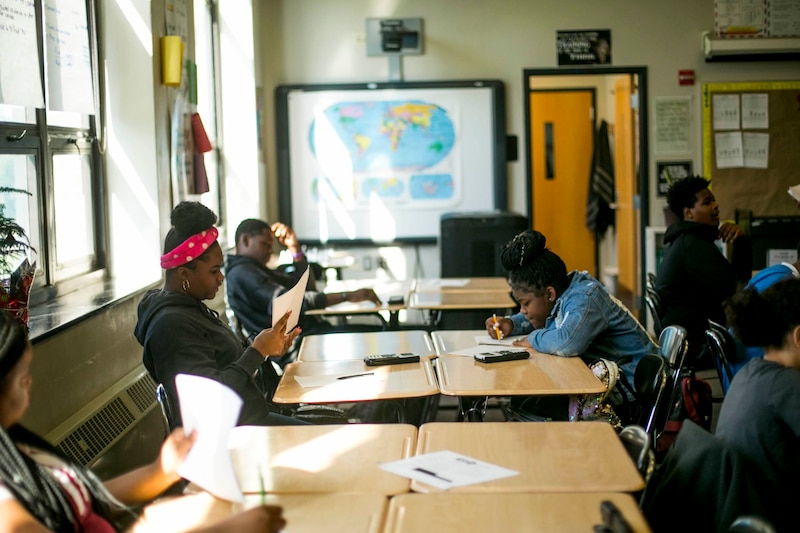
Students share what they need after crisis and reflect on what must change
Teens say it takes self-love to navigate times of crisis
A group of about 20 Detroit teens set out to learn two things about their peers: How they practice self-love, and how they find peace in a world in which they constantly feel judged.
These are relevant questions as schools struggle to address student mental health needs. Those troubles existed before the pandemic, but the isolation, lingering effects of remote learning, and challenges coping in the midst of a global health crisis have deepened them. The Detroit teens detailed their findings and, in some cases, expressed their worries in pieces that seek solutions.
Not every upsetting event needs to become a lesson
Black trauma doesn’t have to be channeled into some inspiring lesson, wrote one high schooler in New York, who was haunted by the experience of a teacher making her watch the video of Tamir Rice’s killing.
He helped his school develop a class about mental health
One Newark high schooler went to 19 funerals during the first year of COVID. When he wasn’t saying goodbye to people he cared about, he wrote, he was in front of a screen that was his connection to school and friends for a year and a half.
“I was already in the process of starting a wellness council, a club where students could share their struggles and hear about what others are going through. If we could start this club, why not a class about mental health built into the school day? ... The result of all this planning is a real-life class called Health and Wellness.”
‘Peace warriors’ at Chicago schools spread messages of nonviolence
The Peace Warriors program, a central part of some schools’ efforts to confront gun violence by centering students’ needs, trains students to mediate conflicts, support grieving classmates, and bring peace and happiness to school by greeting peers at the front door and leaving celebratory birthday notes on lockers.
“Our biggest goal is to end violence — any and everywhere and to do that — we have to end violence inside of ourselves first because violence starts internally with the thought,” said DeMarcus Thompson, a then 17-year-old Peace Warrior at North Lawndale College Prep. “In order to get to our goal, we have to work together.”

